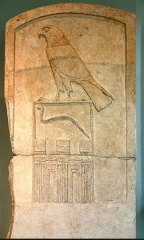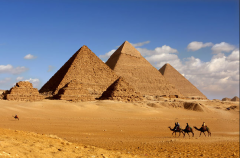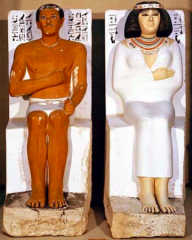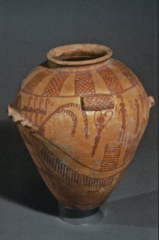![]()
![]()
![]()
Use LEFT and RIGHT arrow keys to navigate between flashcards;
Use UP and DOWN arrow keys to flip the card;
H to show hint;
A reads text to speech;
10 Cards in this Set
- Front
- Back

Name Place Dynasty Material |
Name: Limestone funerary stele of King Wajd Place: Abydos' tomb Dynasty: 1st Dynasty Material Limstone |
|

Name Place Dynasty Material |
Name: Step pyramid of King Djoser Place: Sakkara Dynasty: 3rd Dynasty Material: Stone |
|

Name Place Dynasty Material |
Name: Seated statue of King Khafra Place: His valley temple in Giza Dynasty: 4th Dynasty Material: Volcanic Rock |
|

Name Place Dynasty Material |
Name: The Great Pyramids of Khufu, Khafra, and Menkaura (right to left) Place: Giza Dynasty: 4th Dynasty Material: Sandstone core, with coating of limestone |
|

Name Place Dynasty Material |
Name: Painted statues of Rahotep and Nefer Place: Medium Dynasty: 4th Dynasty Material: Limestone |
|

Name Place Dynasty/ Period Material |
Name: Pottery Vessel Place: El-Amra Dynasty/Period: Naqada 2 period Material: Clay |
|

Name Place Dynasty/ Period Material |
Name: Schist palette of King Narmer Place: Temple of Hierakonpolis Dynasty/ Period: Naqada 3 Period Material: Schist |
|
|
How did the pyramids develop? (Styles, dynasty, and ruler) |
In the 3rd Dynasty: 1) Mastaba 2) Step Pyramid In the 4th Dynasty: 1) Bent Pyramid 2) True Pyramid |
|
|
Why where the tombs large and monumental? |
Hierarchy of size theory |
|
|
What do such large projects imply about royal power? |
-To show the king was still powerful after death, only in the early period were they so large. It stopped because it took up all the resources of the entire country and taxes for one 20-30 year project. |

